10 Innovative Ways to Divide a Shared Kids’ Room for Privacy!
Sharing a room can be an adventure for kids, fostering both companionship and conflict. As a parent, you want to encourage the fun while giving each child their own space for privacy and downtime.
This balance is key to a harmonious shared room that caters to both their shared activities and individual needs. With some creativity and planning, you can transform a shared kids’ room into a functional space that offers the best of both worlds.
1. Color-Coded Zones
Why it’s important:
Color-coding helps children identify their own space in a shared room, reducing territorial disputes and allowing for personal expression.
Practical tips:
- Paint each child’s wall or section of the room in their chosen color.
- Select bedding and accessories like rugs, lampshades, and storage bins that match each zone’s color scheme.
- Use wall decals or art that reflect each child’s interests in their color-coded area.
Estimated Cost and Time Required:
Paint and accessories can vary in cost, but on average, you might spend around $50-$200 per zone. Setting up a color-coded zone can take a weekend, depending on the paint drying time and the organization of accessories.
2. Curtain Dividers
Why it’s important:
Curtains are an affordable and flexible way to divide a room, offering privacy for each child when needed and the ability to open up the space fully at other times.
Practical tips:
- Install a ceiling track for a smooth curtain movement.
- Choose heavy curtains that can block light for privacy or sheer ones for a lighter feel.
- Pick out curtain colors or patterns that complement the room’s overall theme.
Estimated Cost and Time Required:
A ceiling track system and curtains can range from $20 to $100. Installation typically takes a few hours, making it a quick and easy project for immediate results.
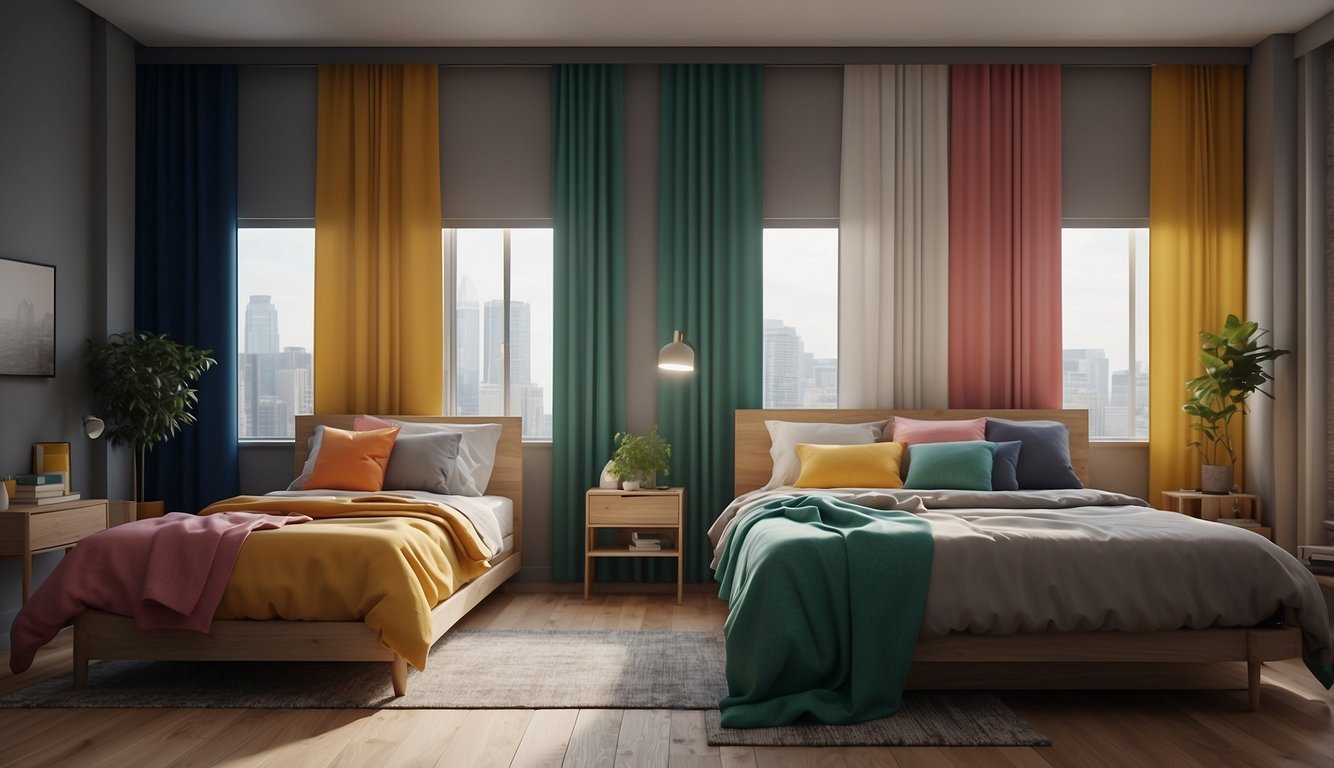
3. Bookshelf Barricade
Why it’s important:
A bookshelf not only divides the room but also offers ample storage space for books, toys, and other belongings, keeping the room organized and functional.
Practical tips:
- Select a sturdy bookshelf that won’t easily tip over and secure it to the wall for safety.
- Arrange books and toys so that they are accessible from both sides, if possible.
- Use decorative bins on the shelves to store smaller items and reduce visual clutter.
Estimated Cost and Time Required:
The cost of a bookshelf can vary widely, from $30 for a simple unit to $300 for a more substantial piece. Assembly and organization can take up a day, especially if anchoring to the wall for safety.
By implementing these first three ideas, you can begin to create a shared kids’ room that feels personalized and private while still fostering a sense of unity and fun.
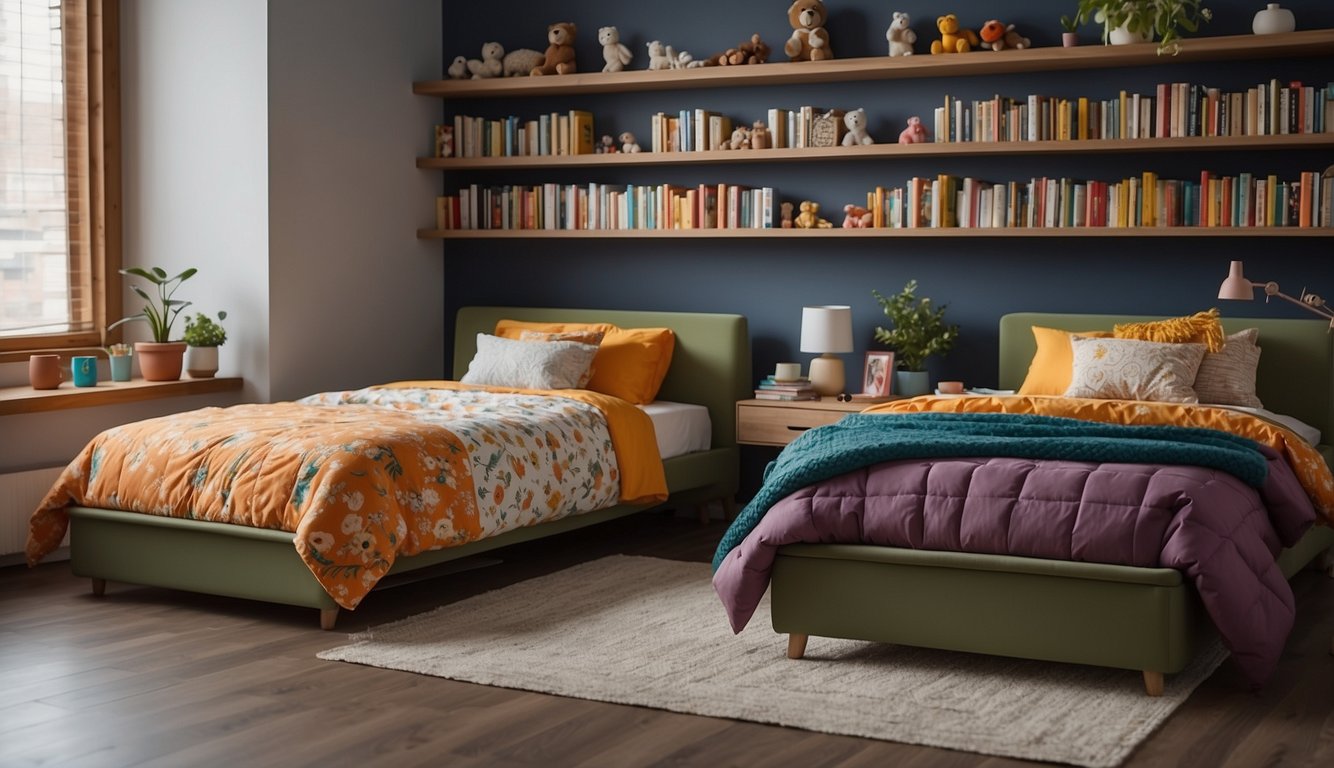
4. Loft Beds with Study Areas
Why it’s important:
Loft beds elevate the sleeping area, freeing up valuable floor space for study or play, and providing a distinct separation between rest and activity areas.
Practical tips:
- Choose a loft bed with an integrated desk or create a custom study area underneath with a small table and chair.
- Ensure there is adequate lighting under the loft bed for reading and writing.
- Add organizational tools like shelves or bulletin boards to keep schoolwork and supplies tidy.
Estimated Cost and Time Required:
A loft bed with a desk might cost between $200 and $500. Setting up the bed and study area can take a weekend, including assembly and organization.
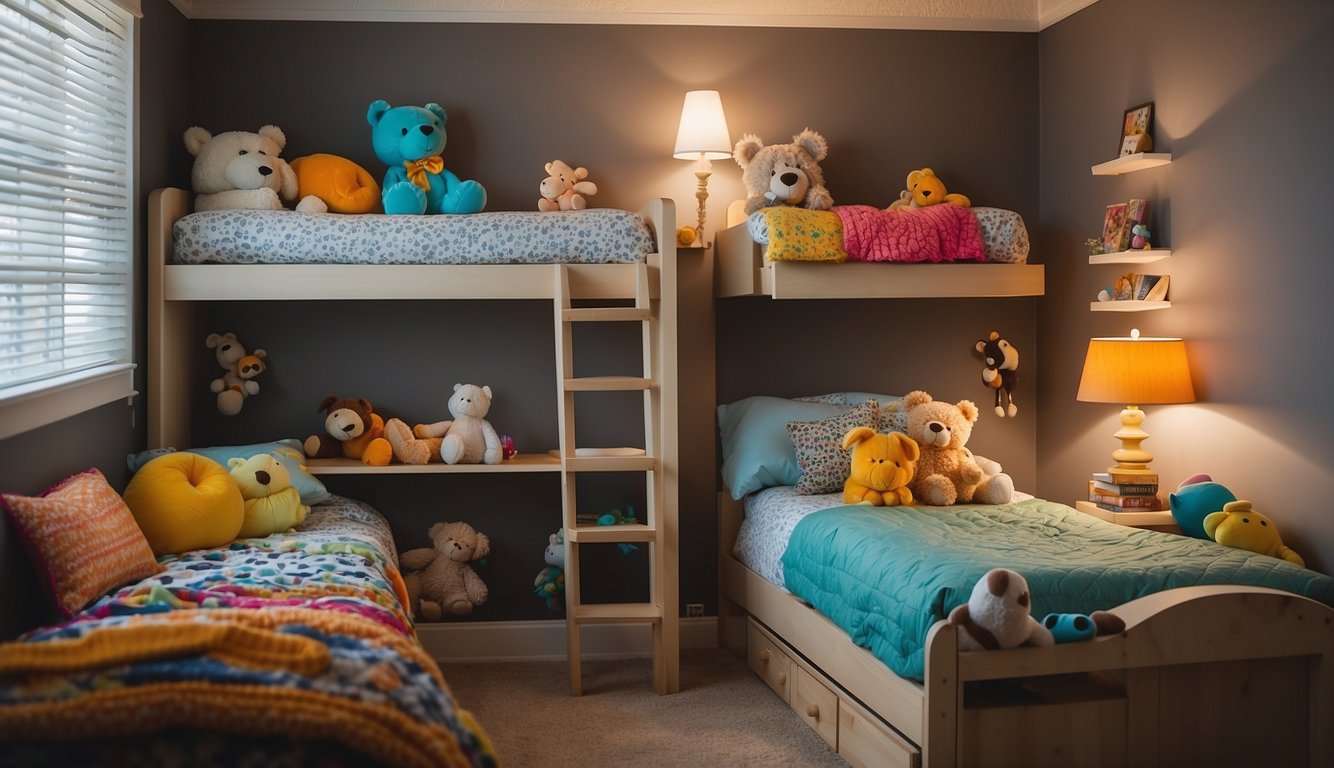
5. Sliding Panels
Why it’s important:
Sliding panels offer a sleek and modern way to divide a room. They can be easily moved to change the layout as needed, providing flexibility in how the space is used.
Practical tips:
- Install a ceiling or wall-mounted track for the panels to slide on.
- Choose panels made of lightweight materials for ease of movement.
- Consider panels with a chalkboard, whiteboard, or corkboard surface for added functionality.
Estimated Cost and Time Required:
The cost for sliding panels and track systems can range from $100 to $300. Installation might take a day or two, depending on the complexity of the system.
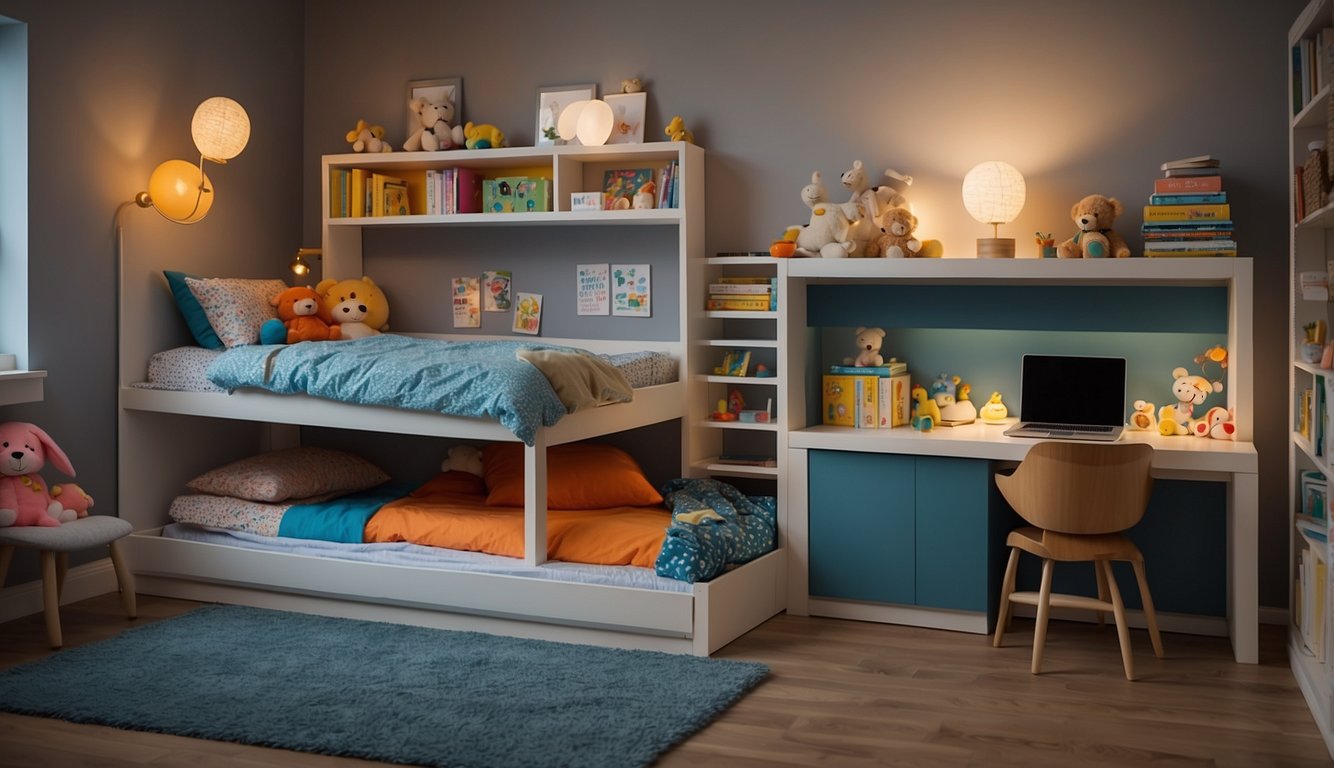
6. Foldable Screens
Why it’s important:
Foldable screens are a no-installation solution that can be easily moved or stored away. They provide a temporary visual barrier that’s ideal for playtime and can be removed for family time.
Practical tips:
- Select a foldable screen that complements the room’s decor and is light enough for kids to move.
- Look for screens with durable hinges that can withstand frequent adjustments.
- Consider a screen that’s tall enough to provide privacy but not so tall that it feels imposing in the room.
Estimated Cost and Time Required:
Foldable screens can be found for as little as $25 to $100. They require no setup time beyond unfolding them and placing them in the desired location.
7. Themed Partitions
Why it’s important:
Themed partitions add a sense of fun and adventure to a shared room, encouraging imaginative play and a love for their personal space.
Practical tips:
- Choose a theme that both children are excited about and will enjoy for a long time.
- Look for or create a partition that features elements of the chosen theme, like a castle, jungle, or outer space.
- Use the themed partition as a springboard for additional room decorations that enhance the overall atmosphere.
Estimated Cost and Time Required:
Depending on the complexity of the design, themed partitions can range from $50 to $300. Installation time can vary from an hour for simple screens to a weekend for more elaborate setups.
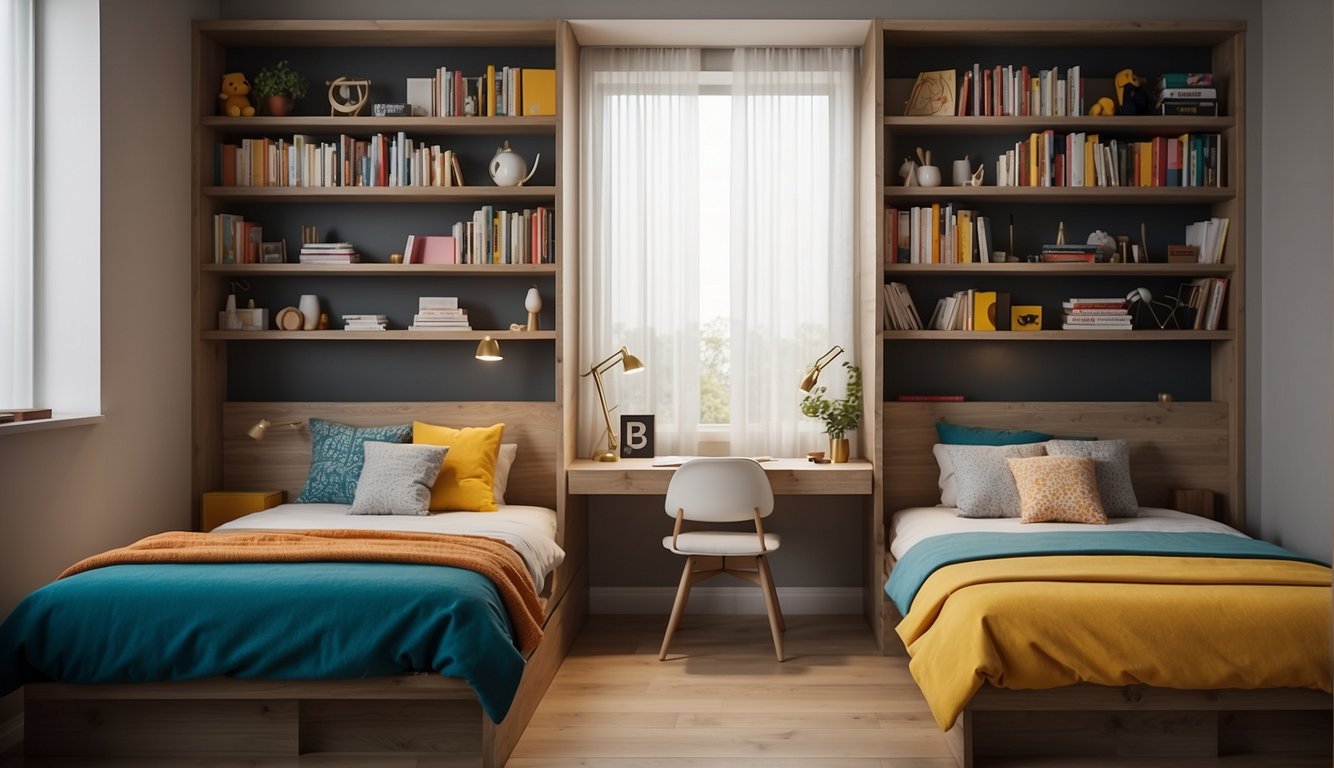
8. Tent or Canopy Nooks
Why it’s important:
Tents and canopies create a special sanctuary for each child, offering a cozy spot for reading, playing, or simply relaxing.
Practical tips:
- Choose a tent or canopy that fits well within the allocated space and matches the room’s color scheme.
- Add soft furnishings like cushions, throws, and a small rug for extra comfort.
- Ensure the tent or canopy is easily collapsible for times when more open space is needed.
Estimated Cost and Time Required:
A good quality tent or canopy can be purchased for $30 to $100. Setup is usually straightforward and can be completed within an hour.
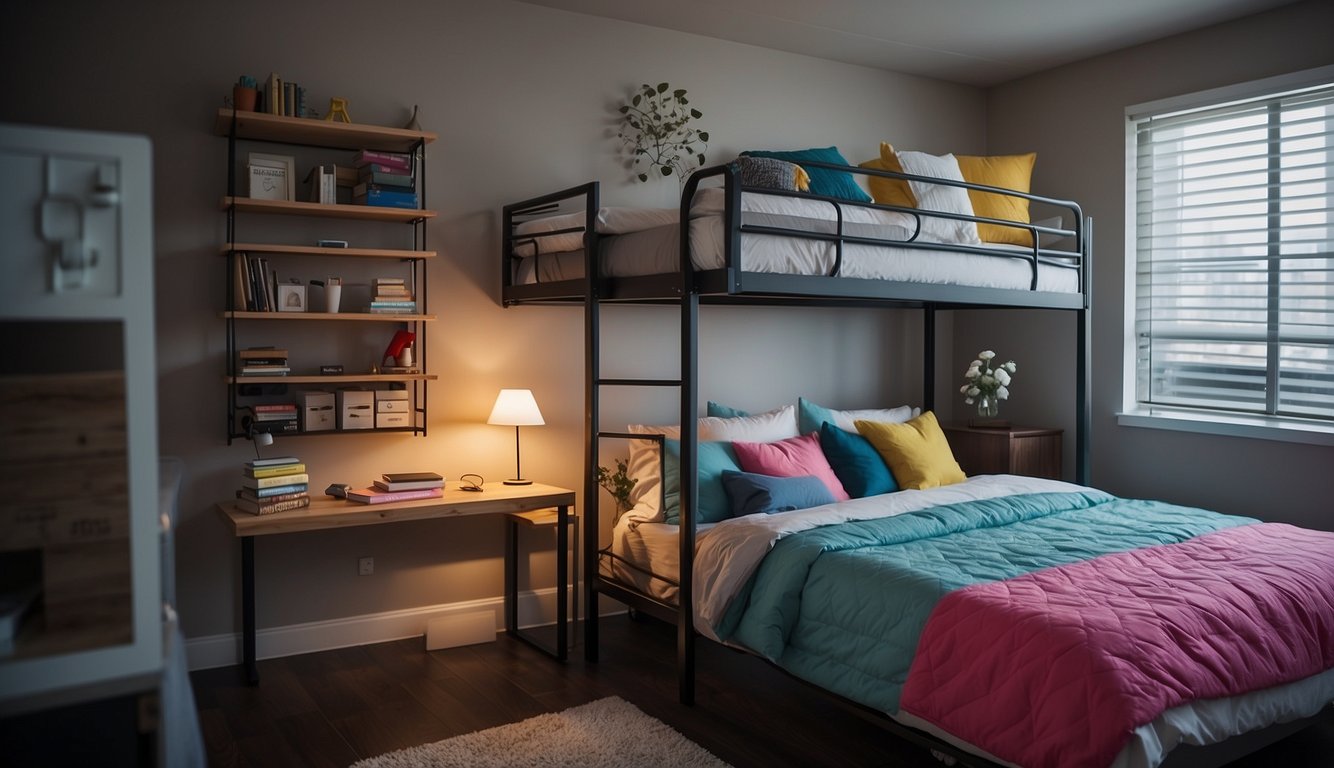
9. Personal Workstations
Why it’s important:
Dedicated workstations give children a sense of responsibility and ownership over their tasks, whether it’s homework, drawing, or building with blocks.
Practical tips:
- Equip each workstation with the necessary supplies for the child’s activities, such as pencils, paper, and art materials.
- Include organizational tools like desk organizers or file holders to keep the area tidy.
- Ensure each desk has task lighting for activities that require focus.
Estimated Cost and Time Required:
Depending on the type of desk and storage solutions chosen, the cost can range from $50 to $200 per workstation. Setting up each area can take a few hours, including assembly and organization.
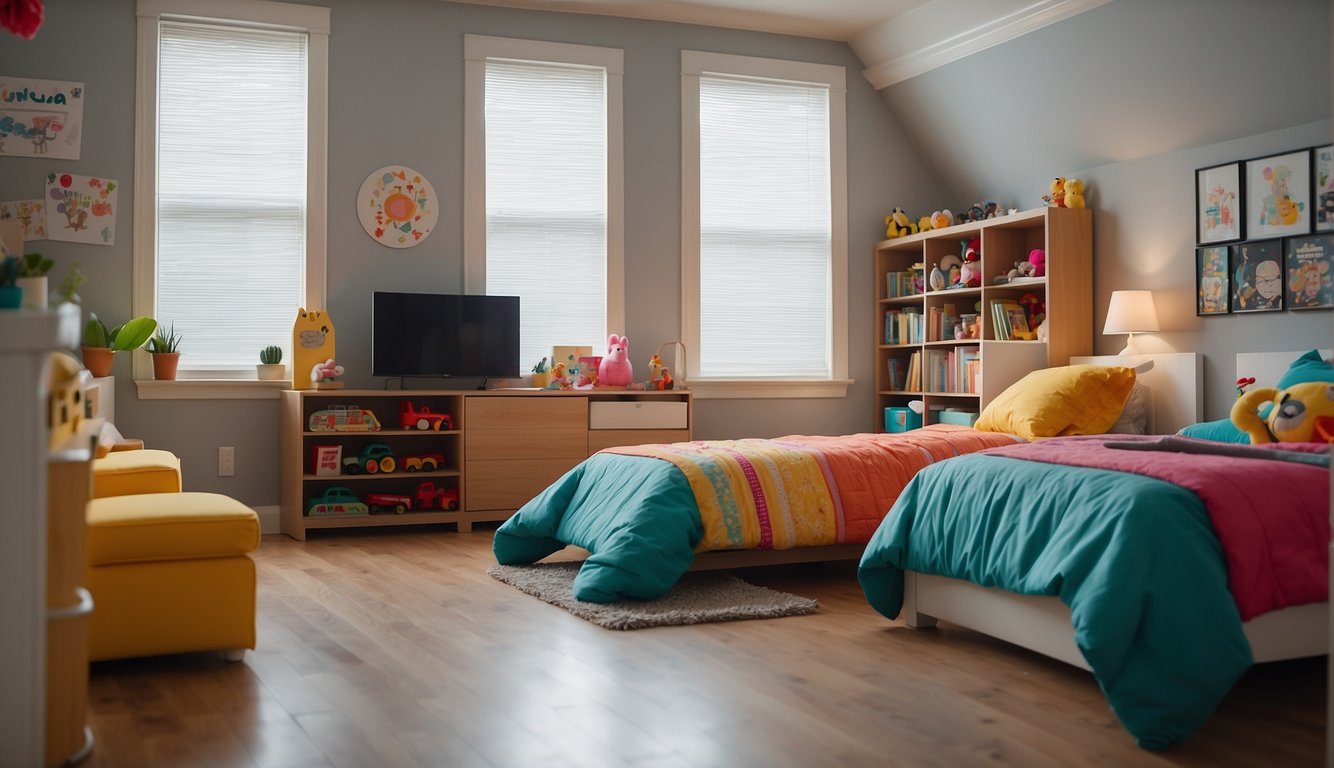
10. Shared Activity Table
Why it’s important:
A shared activity table promotes togetherness and cooperative play, providing a central spot for crafts, puzzles, or board games.
Practical tips:
- Select a table that is sturdy and easy to clean, ideally with built-in storage for supplies.
- Place the table in a neutral zone, accessible from both sides of the room.
- Provide seating that is comfortable and appropriately sized for the children.
Estimated Cost and Time Required:
Activity tables can be found for $50 to $200. Assembly and setup should take no more than an hour or two.
Conclusion
Creating a shared kids’ room that’s both private and fun is all about finding the right balance. Each child needs their own space to grow and express themselves, but it’s also important to have areas that bring them together.
By using these innovative ideas to divide the room, you can provide your children with a space that’s uniquely theirs while still fostering the shared experiences that build strong sibling bonds.
Remember to involve your children in the decision-making process, ensuring the room reflects their personalities and meets their needs. With a little creativity and effort, you can design a shared room that they’ll love for years to come.
Let Us Know How We’re Doing!
Did this expertly prepared resource answer your question?
Do you have another question about home maintenance, home improvement projects, home appliance repair, or something else?
Get more information, send in questions and keep the discussion going by contacting the I’ll Just Fix It Myself company customer service team at at 1-800-928-1490 or Email us at [email protected]
